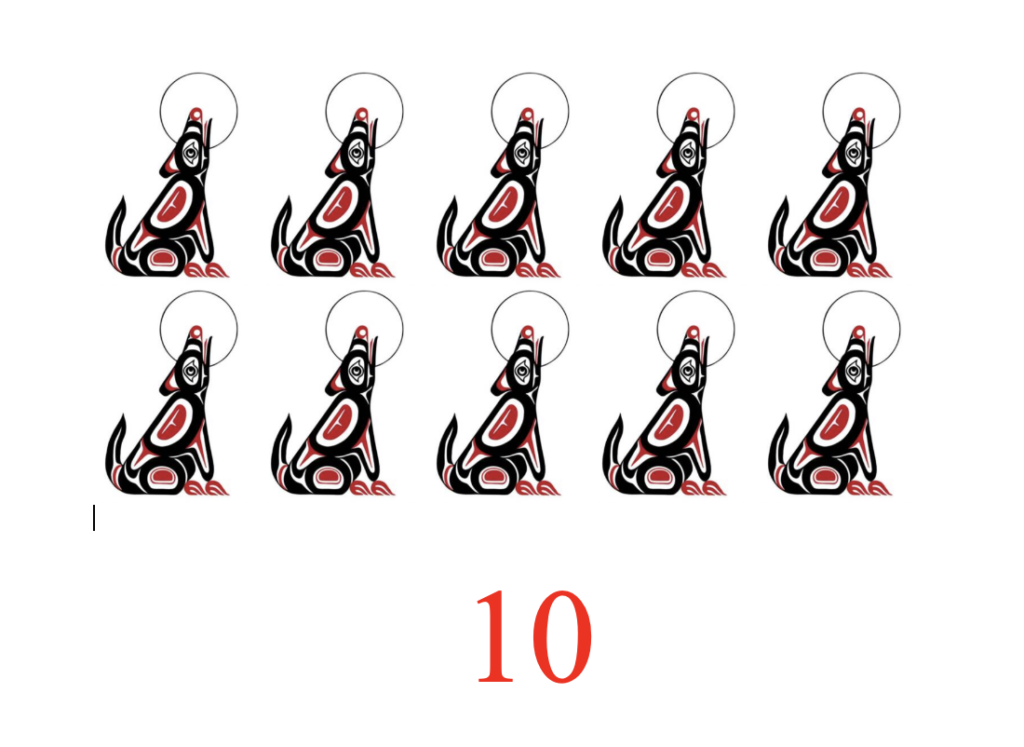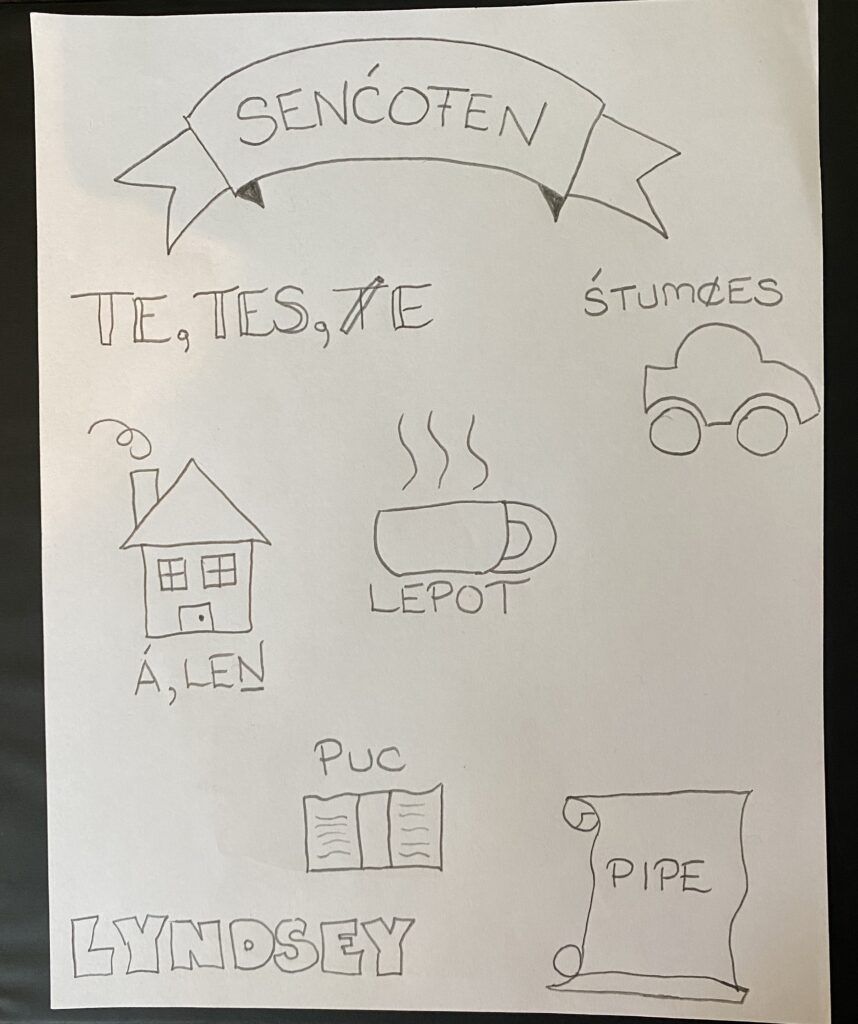Category: Uncategorised
Instruction: I will present students with flash cards with numbers 1-10, pictures of the Indigenous wolf and no written phonetic. Example: The number 10 with pictures of 10 wolf images and I will say “apən” and have children practicing the pronunciation of apən. I will do this repetitively for numbers 1-10.

Activity: After teaching students the lekwungen words for 1-10 they will engage in a game of memory to try and match out two cards, if finding difficulties an audio will be able available.
Evaluation: Student will no longer require audio, and therefore they will be able to move onto the next part of my final lesson plan.
Goal
Students or beginners will learn to learn to recognize numbers 1-10 while only hearing them in lekwungen before reading them in the lekwungen phonetic alphabet.
Learning Objectives
Learning Objectives should be SMART: Specific, Measurable, Attainable, Relevant, and Time-based.
- Begin learning how to pronounce numbers 1-10 by listening instead of reading (no lekwungen language writing).
- Participate in learning by the repetitiveness of order.
- Develop a listening ear through the different sounds each word makes.
- Advance in pronunciation skills.
- Connect the curriculum they do know (#1-10) to lewungen. Example: 1= nətsə)
By the end of the lesson, learners will be able to:
- Upon prompting and guidance, be able to differentiate numbers 1-10.
- With prompts and some visual flash cards are able to answer/repeat numbers in non subsequent order.
- Able to repeat language words after mentor.
Prior Knowledge and Learner Profile
The learners are all beginner level at any age but targeted to K/1 that I would like to teach. Learning takes place in a classroom setting. Learners will not learn the lekwungen alphabet until they can hear the sounds orally.
- Learners will need to learn or already know their visual numbers 1-10.
- Learners will need to become familiar with certain sounds/pronunciation.
Delivery
- Beginning/Introduction: Identifying which children/new learners can identify visually numbers 1-10.
- Write numbers 1-10. Teacher and TA can distribute worksheets.
- Flashcards introducing orally the lekwungen language (no lekwungen alphabet phonetic)
- Teach lekwungen 1-10 with receptiveness from learners.
- Have students identify number in lekwungen with confirmation from teacher.
Evaluation
Repeat until students can identify all ten lekwungen words/numbers.

Johanna’s presentation was a great inspirational reminder to check in with my students daily. I did practice teaching my students emotions in the language and it always makes me so proud to hear our lekwungen children using the lekwungen language.
The first time I saw sketch noting was at a conference in Hawaii, I was fascinated with how quick the person sketch noting was, I did not really understand what it was for until this lesson. I see now that sketch noting for yourself or observing someones sketch notes while listening to a public speaker can help embed the memory into your brain and also get you to really think about what the person is saying. It feeds your brain by implanting the discussion to think about later on in my opinion. I think the only con of sketch noting is tailoring it to fit the age group of children I want to work with, for myself it would be relatively easy to create sketch notes my students can visualize but to teach them to do it themselves, often when my students draw and write in their journals later on they can’t recall the story they drew or wrote about.